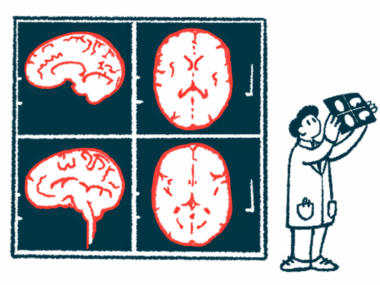#ACTRIMS2020 – Remyelination in Adult Animal Brains Possible via Cell Transplant, Study Says
Written by |

#ACTRIMS2020, photo by Jose (Bionews)
Transplanting human glial progenitor cells (GPCs) — brain cells able to generate myelin-producing cells — effectively led to remyelination in the brains of adult mice with myelin disorders, a study found.
These results were presented at the Americas Committee for Treatment and Research in Multiple Sclerosis (ACTRIMS) Forum 2020, running Feb 27–29 in Florida, by John Mariani, PhD, with the University of Rochester.
His presentation was titled “Human Glial Progenitor Cells Effectively Remyelinate The Demyelinated Adult Brain.”
Therapies available for multiple sclerosis (MS), which is characterized by an inflammatory loss of myelin (the protective and insulating protein coat on nerve fibers), aim to ease symptoms and delay functional decline.
But researchers and pharmaceutical companies have been shifting attention to remyelination approaches that might tackle the root cause of the disease.
Such strategies have the potential to promote myelin repair, and possibly halt disease progression — including the transition to secondary progressive MS (SPMS), which is marked by a steady worsening of neurological symptoms.
Current approaches to remyelination — in preclinical or clinical testing — include blocking inhibitors of remyelination, improving the clearance of myelin debris, and increasing the number or the differentiation of progenitor cells, known as oligodendrocytes, that are capable of giving rise to myelin-producing cells.
Oligodendrocytes are in close contact with and myelinate nerve fibers in the central nervous system (CNS, the brain and spinal cord). They are not neurons, but belong to a diverse group of cells found in the nervous system called glia.
Glial progenitor cells (GPCs) and neural stem cells may be isolated from a donor and transplanted into myelin-deficient recipients. This process, a form of introducing new and healthy oligodendrocytes to rescue myelin production, serves as a potential remyelination therapy.
GPCs arise from neural stem cells, and are the principal source of new oligodendrocytes. For this reason, they are also referred to as oligodendrocyte progenitor cells (OPCs). GPCs can be present in developing embryos, but are also found in newborn and adult brains.
Infusions of GPCs derived from human fetuses were reported to completely remyelinate and restore affected brain areas of newborn mice with a genetic deficiency for myelin, called shiverer mice. These animals shake, seize, and die prematurely. According to this study, the human donor cells provided enough myelin to protect nerve fibers and halt these symptoms, and significantly extended or even normalized lifespan in young animals.
Based on these promising data, researchers at the University of Rochester examined whether human GPCs might also disperse broadly and successfully engraft the brain of adult shiverer mice, and effectively promote remyelination.
It “remained unclear whether hGPCs [human GPCs] are able to migrate extensively or remyelinate brain tissue demyelinated in adulthood,” the scientists wrote.
They transplanted GPCs derived from human fetuses into adult shiverer mice and into healthy mice. Researchers also used a second mouse model, in which myelin loss is induced via a compound called cuprizone, to investigate the effects of GPCs on newly demyelinated lesions.
Cells were directly introduced by an injection into the corpus callosum, a region connecting the brain’s right and left sides.
The transplanted human GPCs were seen to widely infiltrate the brains of adult shiverer mice, and be able to “robustly myelinate” nerve fibers.
By tracking mice-own and human GPCs, researchers confirmed similar effects in the cuprizone mouse model, where human GPCs were enough to remyelinate denuded nerve fibers, either delivered prior to or after induced demyelination.
For a closer look at what happened to human GPCs once inside a mouse brain, the researchers extracted human GPCs from the brain of transplanted mice and analyzed the gene activity of individual cells. This type of analysis, termed single-cell RNA-sequencing, reveals the set of genes turned on and off in each cell, as well as the magnitude of this activation or silencing. As such, it provides insights into the biological pathways ongoing in cells.
Data revealed that brain-delivered human GPCs activate genetic programs related to oligodendrocyte differentiation and myelination, in agreement with the successful remyelination activity these cells demonstrated in the experiments.
The genetic program activated by human GPCs predicts “compensatory remyelination after demyelination,” Mariani said.
Taken together, “these data indicate the ability of transplanted [human] GPCs to disperse throughout the adult CNS, to myelinate dysmyelinated regions … and to also be recruited as myelinating oligodendrocytes at later points in life, upon demyelination-associated demand,” the researchers concluded.





